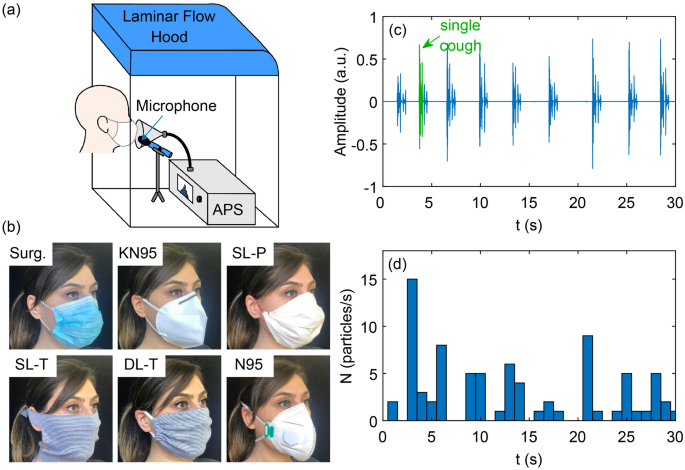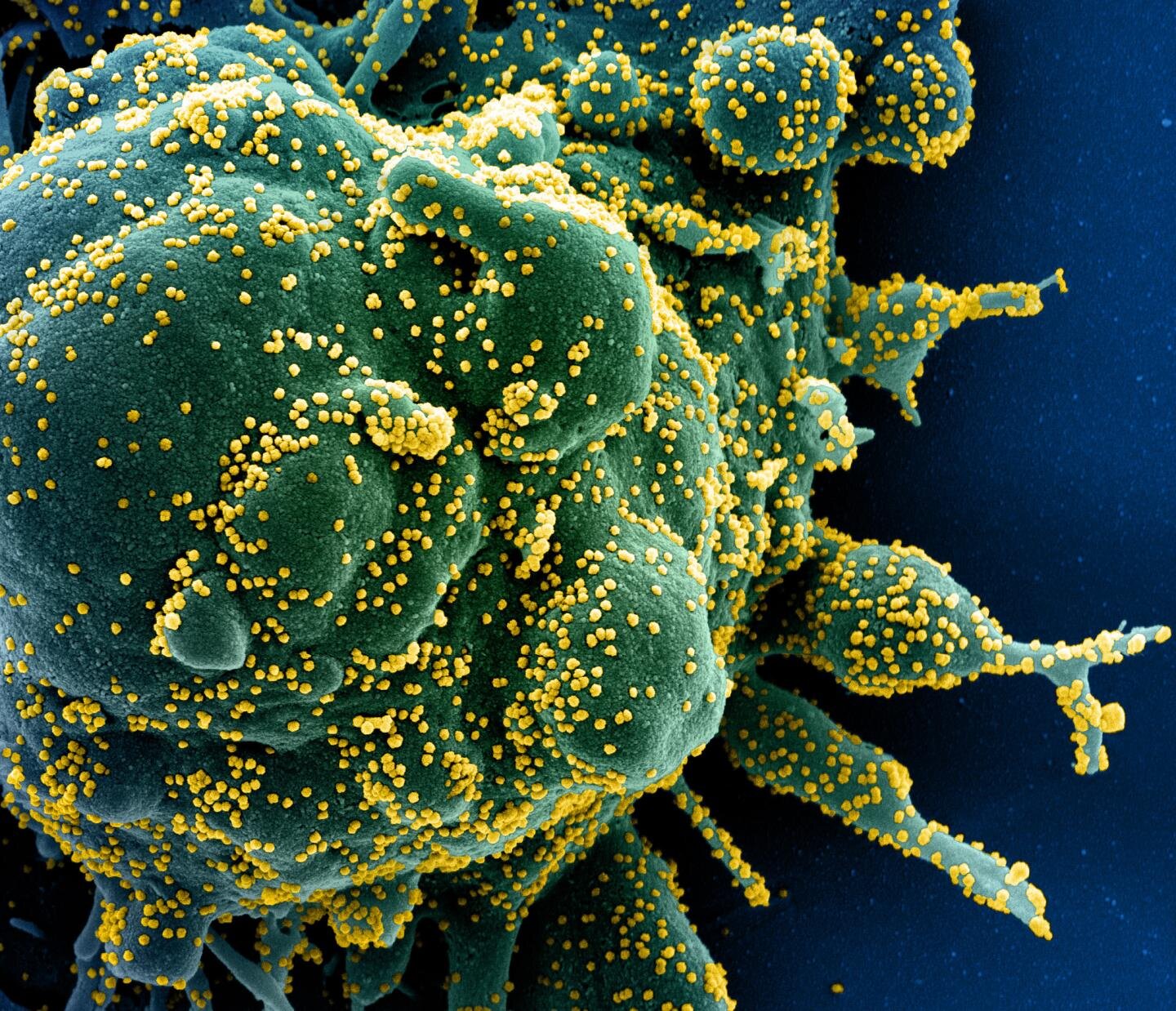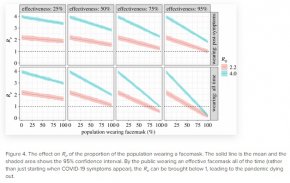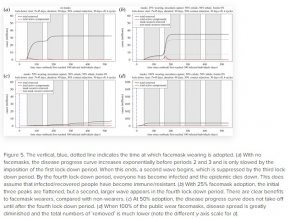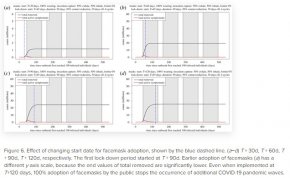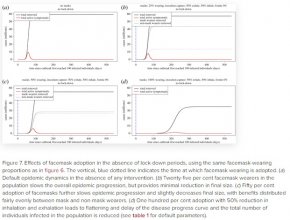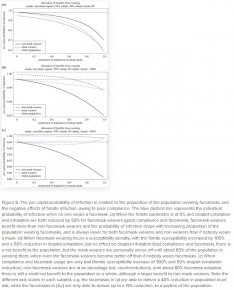Post 2 of 3: Shining a light on lazy thinking
11. During the campaign, Biden spoke of his plan to issue a nationwide mask mandate. Doing so could be challenged in court, though, and in October Biden said he would go to every governor and urge them to issue mask mandates — studies show that public health measures like mask mandates work to prevent infections and hospitalizations.
12. IMO, the reason why some Americans still feel that masks are optional, reflects on failures at two levels that are mutually reinforcing. One, there is the failure of Trump’s leadership, in pandemic management, at the federal level; and two, a failure of public education efforts, very often at state and city level.
13. It warms my heart that President-elect Joe Biden called and recognized @Cleavon_MD (Dr. Gilman). Dr. Gilman has not only been on the front line fighting this pandemic, but has painstakingly shared an inside picture of what’s happening.
14. In related news, Dr Anthony Fauci, director of the National Institute of Allergy and Infectious Diseases at the US National Institutes of Health, (who has emerged as a leading US public health expert during the COVID-19 pandemic), has been asked to serve as Biden’s chief medical adviser.
15. Biden said: “I asked him to stay on in the exact same role as he’s had for the past several presidents, and I asked him to be a chief medical adviser for me as well and be part of the COVID team.”
16. Dr. Anthony Fauci warns "it's not going to be a light switch" back to normalcy even when a Covid-19 vaccine becomes available to the public. In fact, Fauci recommends people still wear masks and practice social distancing even after getting the vaccine, he told CNN.
9. People like Ohio Congressman Jim Jordan, Nebraska Republican Gov. Pete Ricketts and President Donald Trump, who ignore his advisors’ guidance on pandemic management, generally have no problem calling others stupid, while behaving badly themselves (but often defending their lazy stance, couched in the language of personal liberty).Governments treat their people as mindless herds by the blanket rules requiring anything from mandatory masks all the time everywhere (like in California now) to curfews on outdoors presence to closing hiking in natural parks. And the less the government repects an individual as a rational being the more of these regulations you get.
...In my opinion, not by instituting obedience laws, but by encouraging personal responsibility and educating on the issue. Such as the mask wearing thing...
...I am sure most people on here, just like most people in general, do not realize how little effectiveness they provide in 90% of normal life situations...
...Aerosols behave very differently depending on the size, dropping to the ground like little rocks when the size is above a dozen of micron or so (the larger the droplets the more infectious) and present no danger to anyone who is further than a meter away. The smaller stuff behaves pretty much like cigarette smoke, which means that outdoors it almost instantly dissipates from the source to very low concentrations which are insufficient to cause a transmission and, again, present no danger to anyone further than a meter from the infected...
...Plus, this smaller aerosol that is carried by air flows is far smaller than the pore sizes of most masks, such as the surgical ones or anything from cloth, and will go through them like knife through butter. The bottom line is, mandating masks outdoors at all times is ignorant idiocy, and the data suggests as much. Presumably, over 90% of all infections are caused by less than 10% of the infected, essentially meaning that the transmission predominantly happens during superspreading events, like the one mentioned above. So, wouldn't it be more reasonable to limit the regulations to address such superspreading events and not go full retard California style and ban everything? Banning hiking? Tennis courts? Curfews? Closed National Forests? It is a disgrace and an embarassment how they treat people...
(a) This forum encourages sophisticated and in-depth discussions to listen to good ideas and at times to debunk bad ideas — I’ll let others in this forum judge — who is misinterpreting the data and ignoring science — and who is using data to illuminate this discussion.
(b) IMHO, American mask mandates by itself is insufficient to stop the spread at this stage of the pandemic cycle. In other posts in this thread, there are real world examples given on how smart governments have deployed multiple measures to get COVID-19 under control, in a matter of weeks, rather than in months. They can work, if they are drastic enough.
(c) But for a population to agree to drastic measures, there needs to be significant efforts at public education — on the known guidelines on pandemic management — while having the political courage to implement tough measures for the greater good (which is really an art).
One of the problems is that early on, the method of transmission was not known or understood. It was gradually realized that there was a respiratory component, but that too was thought to be droplet transmission and that the infection could not be aersolized...
...What is known to occur, though the reasons are not known, is that some people, for some reason, tend to expel a greater amount of fine matter than others. This 'greater amount' is usually orders of magnitude greater. One of the early 'superspreader' events in the US, which was a church choir practice in WA state IIRC, mentioned the potential for fine matter to have been circulated during the practice.
10. In a speech on 9 Nov 2020, Biden implored Americans to stop politicizing masks and social distancing. The main man has spoken and said:The point is simple. I don't want to do stupid things my government makes me do.
"Please, I implore you, wear a mask," the President-elect said. "Do it for yourself, do it for your neighbor. A mask is not a political statement but it is a way to start pulling the country together."
11. During the campaign, Biden spoke of his plan to issue a nationwide mask mandate. Doing so could be challenged in court, though, and in October Biden said he would go to every governor and urge them to issue mask mandates — studies show that public health measures like mask mandates work to prevent infections and hospitalizations.
12. IMO, the reason why some Americans still feel that masks are optional, reflects on failures at two levels that are mutually reinforcing. One, there is the failure of Trump’s leadership, in pandemic management, at the federal level; and two, a failure of public education efforts, very often at state and city level.
13. It warms my heart that President-elect Joe Biden called and recognized @Cleavon_MD (Dr. Gilman). Dr. Gilman has not only been on the front line fighting this pandemic, but has painstakingly shared an inside picture of what’s happening.
14. In related news, Dr Anthony Fauci, director of the National Institute of Allergy and Infectious Diseases at the US National Institutes of Health, (who has emerged as a leading US public health expert during the COVID-19 pandemic), has been asked to serve as Biden’s chief medical adviser.
15. Biden said: “I asked him to stay on in the exact same role as he’s had for the past several presidents, and I asked him to be a chief medical adviser for me as well and be part of the COVID team.”
16. Dr. Anthony Fauci warns "it's not going to be a light switch" back to normalcy even when a Covid-19 vaccine becomes available to the public. In fact, Fauci recommends people still wear masks and practice social distancing even after getting the vaccine, he told CNN.
Last edited:

